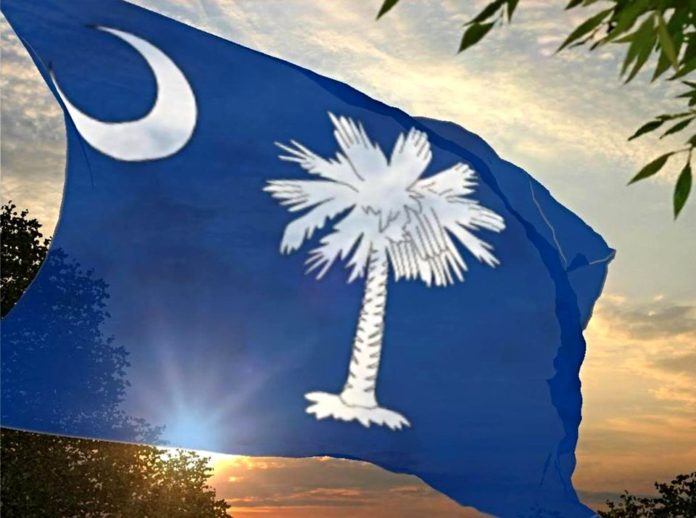Everybody loves the State Flag of South Carolina. It has been voted the most popular state flag in the United States and continues to be worn on everything you see including car stickers, coffee mugs, apparel and hundreds of other things, while also flying from the front porches of hundreds of local homes.
However, a common misconception is that the flag depicts a crescent moon and a palmetto tree, laid against a field of indigo.
This isn’t correct and to clear that up, we decided to give you a brief history of the famous flag of the Palmetto State.
Truth be told, the South Carolina State flag has been in transition ever since Colonel William Moultrie assembled a banner of dark blue with a crescent shape in the upper left corner of a flag in 1776.
The color was from the patriot uniforms and the crescent was from a similar shape worn on the caps of soldiers with the word “LIBERTY” inscribed.
Going back even further, the deep blue color came about from the indigo dye industry. The indigo plant adapted well to South Carolina’s coast, and soon made our local growers very wealthy with a bounty from the British. This was the first lucrative industry for this area. The dark blue color was chosen for the military uniforms of our Revolutionary patriot soldiers and, from it, for our state flag.
The crescent shape came from the symbol worn on South Carolina’s soldier’s caps. It certainly does resemble a phase of the moon, but in early flags the pointed ends wrapped more toward the center, a little farther than the moon does.
This lends credence that the idea of the symbol on soldier’s caps was from a piece of protective metal worn over the upper chest area by ancient warriors to protect the heart, called a gorget.
Ancient warriors wore them suspended from a chain or cord around their necks and they proved very effective.
By the time of the Revolutionary War, they were more symbolic of an officer’s rank. Francis Marion is seen wearing a thinner one in many of the drawings and statues of him. In his memoirs, Colonel William Moultrie wrote: “A little time after we were in possession of Fort Johnson, it was thought necessary to have a flag for the purpose of signals as there was no national or state flag at that time. It was desired by the council of safety to have one made, upon which, as the state troops were clothed in blue, and the fort was garrisoned by the first and second regiments, who wore a silver crescent on the front of their caps; I had a large blue flag made with a crescent in the dexter corner, to be in uniform with the troops.”
This flag was flown in June of 1776 in the defense of a new fortress on Sullivan’s Island, when Moultrie faced off against a British fleet that had not lost a battle in a more than a century.
Also, his decision to construct the fort out of palmetto logs was inspired and protected the fort very well from the British attackers. The spongy fiber of the logs absorbed or repelled cannon balls very effectively and little damage was done to the fort.
On June 28, 1776, the flag was shot down, but Sergeant William Jasper (of whom nearby Jasper County is now named) ran out in the open, raising it and rallying the troops until it could be mounted again. This gesture was so heroic, saving Charleston from conquest for four years, that the flag came to be the symbol of the Revolution and liberty.
In 1860 when South Carolinians were contemplating seceding from the Union that it had fought so valiantly to create, a new banner was needed.
The General Assembly considered several options, but the indigo and the crescent were enduring symbols of our Colonial days.
Honoring the use of the palmetto logs at Fort Moultrie, the Palmetto Tree was added in 1861, in white against the indigo background.
The South Carolina State Legislature has never officially adopted any flag to represent our state, so several versions are available, but they all look very similar. In some, the palmetto trunk is a bit thicker, the mane of the palm fronds is sometimes “fluffier” but all of the versions are immediately recognized as the South Carolina flag.
Long may she wave.










